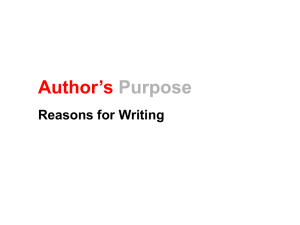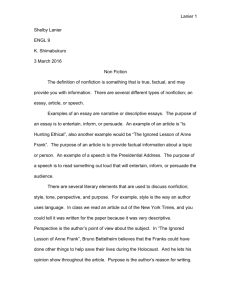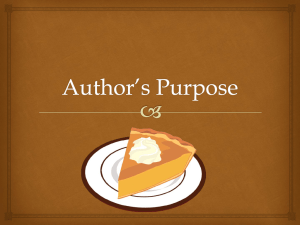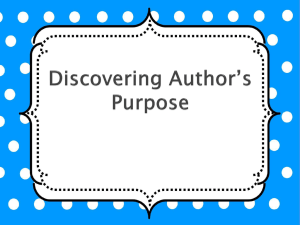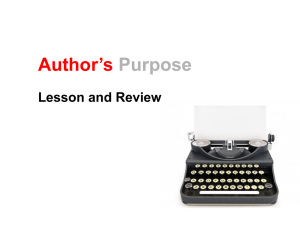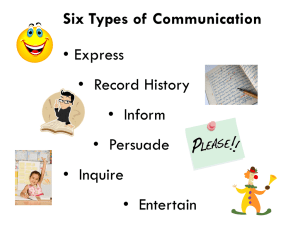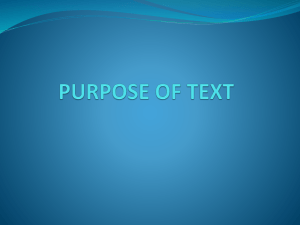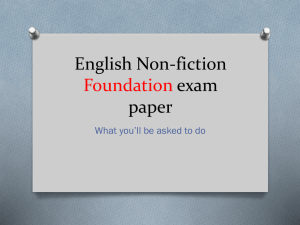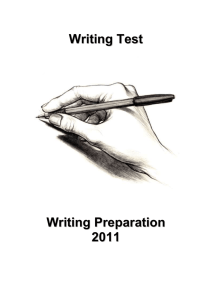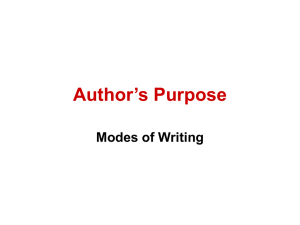Author`s Purpose and Point of View
advertisement
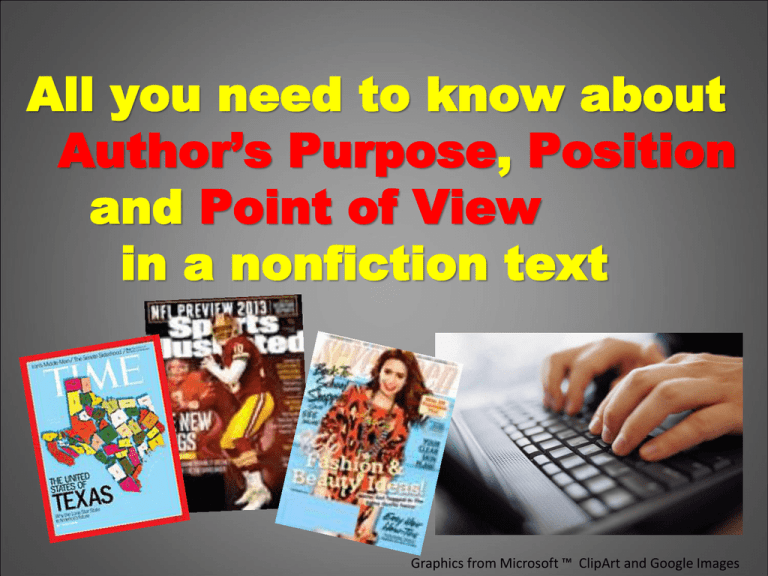
All you need to know about Author’s Purpose, Position and Point of View in a nonfiction text Graphics from Microsoft ™ ClipArt and Google Images What will we learn today? We will learn how to identify the author’s purpose for writing different texts. We will learn that one author’s position can differ from another. We will learn how the author’s point of view affects the text. What is Author’s Purpose? PIE Persuade Inform Entertain Everything you read has a purpose. When authors write books, magazines, newspapers, on-line articles, even commercials, they choose their words for a purpose. The author’s purpose is the reason for writing the text: to Persuade, Inform, or Entertain. Author’s Purpose to persuade When the author’s purpose is to persuade, the author wants the reader to side with his or her position. A persuasive text contains facts and the author’s opinion. With persuasive texts, the author’s position is for or against the issue or topic. Author’s Purpose to inform If the author’s purpose is to inform, the reader learns something from the text. Informational texts often include: Facts Details Instructions Descriptions Explanations Can you identify the author’s purpose? YES! The correct answer is to inform. The label contains information and instructions on how to use the medicine. Author’s Purpose to entertain If the author’s purpose is to entertain, an author writes to interest the reader. Not all entertaining texts are funny. Chasing Lincoln’s Killer was written for entertainment, but the story is serious. Can a text have 2 purposes? YES! Some texts will have two purposes. For example, if an article is about eating healthy, it will try to persuade you to eat your vegetables and inform you about the different types of food groups. Can a text have 2 purposes? Some texts do have two purposes. For example, if a story tells how a teen learned to deal with moving to a new school, the text would inform and entertain the reader. Can a text have 2 purposes? Inform? Entertain? Persuade? www.TeenHealth.org offers many on-line articles on topics that concern teens. This text persuades the reader to “plan your goal” and informs the reader about how to create a personal action plan. Author’s Position An author’s position on a topic refers to what the author thinks about the topic, his or her perspective on the subject. Authors’ Positions on Italian Food One author may write about the many types of pasta and cheeses available in Italian food. This author’s position is that Italian food offers many delicious choices. Another author may write that pasta has too many carbs and cheese includes too many fat calories. This author’s position is that Italian food is fattening. An author’s Point of View in nonfiction Authors want their readers to see the topic from their point of view, through their eyes, from their outlook. In nonfiction, point of view is the perspective the author is writing from. Depending on the topic and purpose, nonfiction writers write in different points of view. An author’s Point of View in nonfiction First Person - (I, we) Examples - autobiographies, memoirs, speeches Second Person - (you, your) Examples – instructions, recipes, advice Third Person - (he, she, it, they Examples – news articles, encyclopedias Author’s Purpose Position, and Point of View Let’s review: What is Author’s Purpose? What are the 3 reasons authors write a text? What does the term author’s position mean? For a nonfiction text, what is Point of View? Now you understand Author’s Purpose Let’s Author’s Position read! and Point of View
